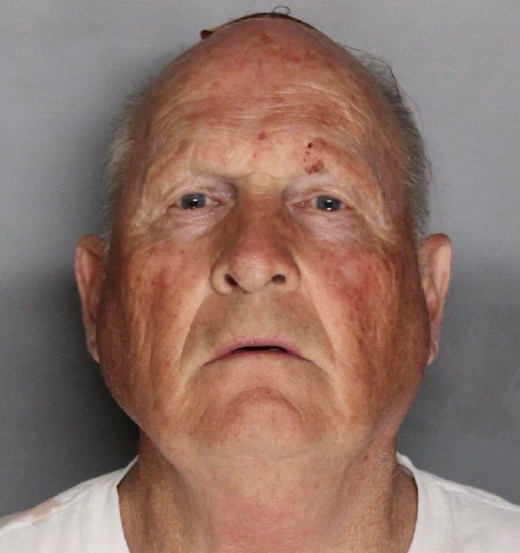Authorities say it's an innovative technique that broke open the long-cold case of the Golden State Killer, who slew at least a dozen people and raped 50 women from 1976 to 1986.
But Steve Mercer of the Maryland public defender's office says it pinpoints a problem: There aren't strong privacy laws to keep police from trolling such databases.
Mercer says right now, people who submit DNA to be tested to find their ancestors can unwittingly become "genetic informants" on family members.
"People who submit DNA for ancestors testing are unwittingly becoming genetic informants on their innocent family," Mercer said, adding that they "have fewer privacy protections than convicted offenders whose DNA is contained in regulated databanks."
The technique that investigators used is known as familial DNA testing, and it has previously raised ethical issues in the forensics community. Typically with the method, investigators search law enforcement databases to identify likely relatives of the person who may have committed the crime.
Critics say that familial DNA testing allows for searches of innocent people who happen to be related to someone suspected of committing a crime or otherwise provided their DNA for inclusion in a database. Law enforcement officials have argued the technique can provide investigators with valuable leads.
In 2008, California became the first state in the country to authorize the testing. It since has been used in at least eight other states.
The method led to the arrest of Lonnie Franklin Jr. in the Los Angeles "Grim Sleeper" serial killings from 1985 to 2007. Los Angeles County sheriff's officials also used it last year to solve the decades-old killing of the ex-wife of Righteous Brothers singer Bill Medley.
DeAngelo Arrest
Joseph James DeAngelo, 72, was arrested Tuesday. After investigators matched crime-scene DNA with a relative, they narrowed it down to the Sacramento-area grandfather using DNA obtained from material he'd discarded, Sacramento County District Attorney Anne Marie Schubert said.
DNA potentially may have played an earlier role in the case. It was just coming into use as a criminal investigative tool in 1986 when the predator variously known as the East Area Rapist and the Golden State Killer apparently ended his decade-long wave of attacks.
DeAngelo, a former police officer, probably would have known about the new method, experts said.
"He knew police techniques," said John Jay College of Criminal Justice professor Louis Schlesinger. "He was smart."
No one who knew DeAngelo over the decades connected him with the string of at least a dozen murders, 50 rapes and dozens of burglaries from 1976 to 1986 throughout the state.
After he was identified as the suspect, however, prosecutors rushed to charge him with eight killings.
In addition, police in the central California farming town of Visalia said Thursday that DeAngelo is a suspect in a 13th killing and about 100 burglaries in the area.
In 1975, of community college teacher Claude Snelling was shot while trying to stop a masked intruder from kidnapping his 16-year-old daughter from his home.
Investigators lacked DNA evidence so Snelling's death and the burglaries weren't included in the tally of Golden State Killer crimes but fingerprints and shoe tracks will be reviewed for matches to DeAngelo, Visalia Police Chief Jason Salazar said.
Investigators searched DeAngelo's home on Thursday, looking for class rings, earrings, dishes and other items that were taken from crime scenes as well as weapons.
Meanwhile, DeAngelo's neighbors, relatives and former acquaintances all say they had no inkling that he could be a serial killer. He worked nearly three decades in a Sacramento-area supermarket warehouse as a truck mechanic, retiring last year. As a neighbor, he was known for taking meticulous care of his lawn in suburban Citrus Heights.
DeAngelo worked as a police officer in the farming town of Exeter, not far from Visalia, from 1973 to 1976.
DeAngelo was a "black sheep" who didn't joke around with other officers, said Farrel Ward, 75, who served on the force with DeAngelo.
Ward said it's possible that DeAngelo helped with the search for Snelling's killer and the elusive burglar but he doesn't recall DeAngelo directly investigating the killing.
"I've been thinking, but there's no indication whatsoever that anything was wrong," Ward said. "How could you just go out and kill somebody and go back and go to work? I don't understand that."
Later, DeAngelo joined the Auburn Police Department outside of Sacramento but was fired in 1979 after he was caught shoplifting a hammer and dog repellent.
Investigators say they have linked DeAngelo to 11 killings that occurred after he was fired.
James Huddle said he always hoped police would catch the killer whose attacks prompted him to buy a pistol.
But he was stunned to find out the man arrested was DeAngelo, his former brother-in-law.

